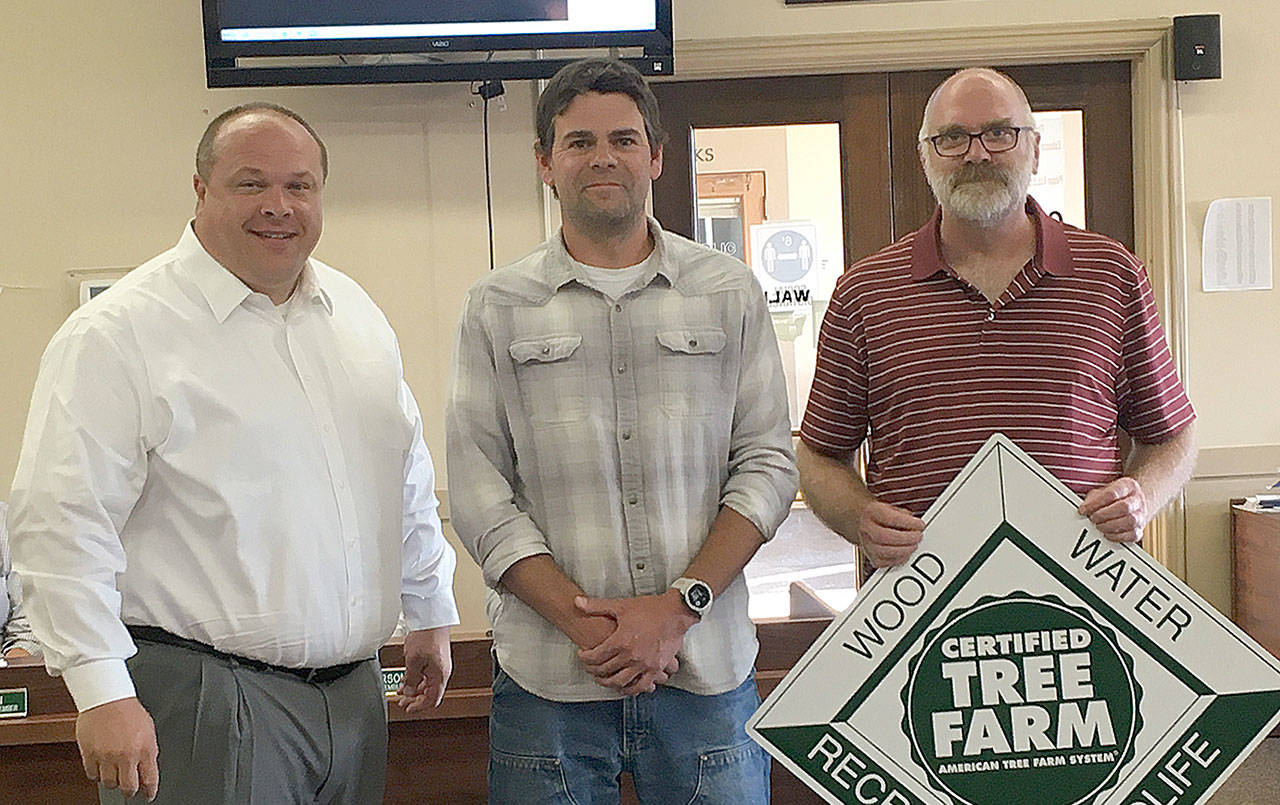The city of Hoquiam’s watershed forests have received American Tree Farm System certification, the result of a thorough update of and adherence to the city’s updated watershed plan.
“The watershed/city forest is such an important resource for both our drinking water source and utility infrastructure funding through the annual timber revenue,” said Hoquiam City Administrator Brian Shay.
“The certification was a goal when we updated our watershed/forest management plan through the assistance of the Grays Harbor Conservation District and our city forester and Montesano City Forester Loren Hiner.”
Jim Getchman and David Houk, both foresters with the conservation district, were on hand to present the certifications — one for the Davis Creek Watershed, another for the Little Hoquiam Tree Farm — on Monday.
“Dave and I developed an updated watershed plan for the city of Hoquiam with field data provided by Loren Hiner,” said Getchman. “The city of Hoquiam has a history of working with conservation districts; the previous forest management plan/watershed plan was written by the conservation district in the early to mid-90s.”
In 2015, Getchman was a forestry intern with Hiner and spent the spring and better part of the summer working on the updated plan, ultimately leading to the tree farm certification on the 6,749 acres of city forest. “To my knowledge this is the first time Hoquiam has achieved forest certification,” he said.
“The American Tree Farm System has been around for a long time,” said Houk. “The very first certified tree farm was the Weyerhaeuser Tree Farm outside of Montesano, the Clemons Tree Farm.”
That tree farm was certified the first official tree farm in the nation June 12, 1941, earning Montesano the moniker, “Home of the Tree Farm.”
Certification carries with it certain benefits, said Houk.
“One of the biggest benefits is probably the image it promotes,” he said. “Being certified insures products out of the watershed come out of a well-managed forest that meets certain standards of sustainability, forest management, wildlife management and water quality.”
That can carry some weight when it comes to selling the watershed’s timber.
“Certification also increases marketability. As mills are ever-increasingly requiring, in some areas, and really desiring, certified wood, it opens up potential new markets for the city,” said Houk.


